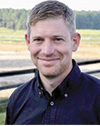Florida and South Georgia have already suffered through a drier-than-normal spring.
Hay could be a hot commodity, to say the least. Does your hay have a nutritional analysis? Work with your local extension office to correctly obtain and submit your forages. The cost is negligible and may be done for as little as $15 to $25 per sample.
The nutritional information, including total digestible nutrients and crude protein, are not only ideal for pricing and purchasing, they are also essential for making plans for targeted feeding. Setting aside the better hay for lactation helps both the female and your wallet.

Higher-quality hay during calving season through breeding will lessen the need for concentrate feeds and promote timely rebreeding intervals, which should be approximately 85 days. Lastly, cattle will require more water in hot weather. At 90°F, a mature cow nursing a calf will drink approximately 17 gallons per day. This could cause an increase in mineral consumption as well.
Spring calving
Creep feeding is not often high on the priority list, but if pastures are short and feed prices are low, it could be an economical way to add pounds. For those in drought areas, you may already have an early weaning date on the calendar. If calves are accustomed to eating creep feed, they should transition very well into the weaning or backgrounding phase with reduced stress.
As always, pregnancy checking is a crucial date in the cow business. If drought is in your area, “preg” day and the eventual cull list can hopefully ease the burden on pastures and stored forage.
Fall calving
Anyone looking to develop replacement heifers should consider saving back 20 percent more heifers than is desired, if the quality and kind meet your standards. Take them through the breeding phase to see which heifers conceive in a 60-day breeding period.
Conception in a defined breeding season as 12- to 14-month-old heifers will be the main criteria for selection. Selling any bred heifers beyond your needs may be another revenue source if the grass is green and demand remains strong for breeding cattle in your area. ![]()

-
Jason Duggin
- Beef Extension Specialist
- University of Georgia
- Email Jason Duggin







